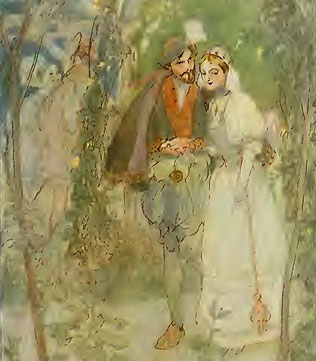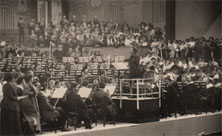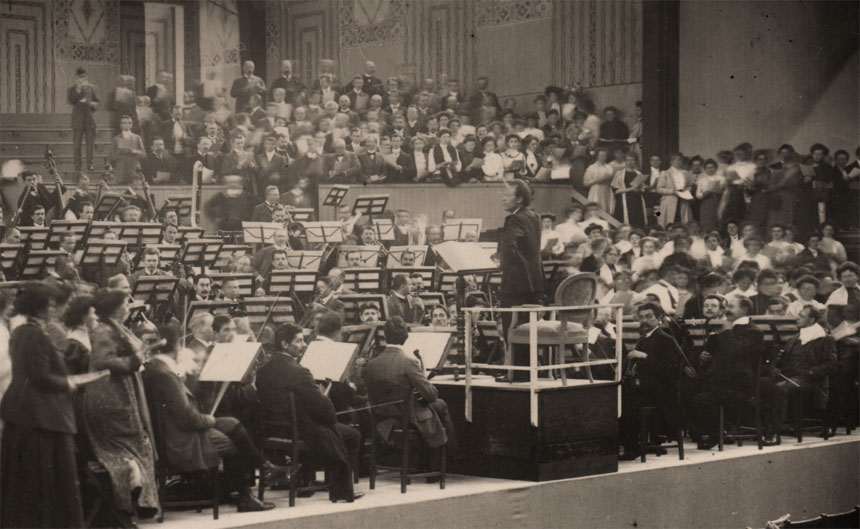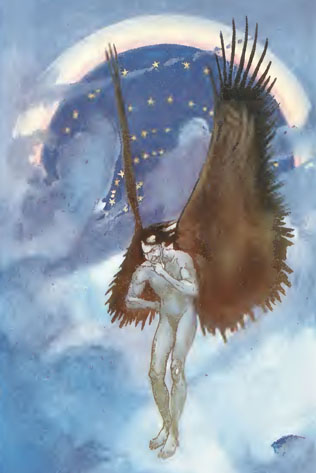-
Mahler's Eighth Symphony represented Mahler's expression of transcendance. The first movement is based on the hymn Veni Creator Spiritus. "The Spiritus Creator took hold of me and drove me on for the next eight weeks until my greatest work was done." As Alfred Roller reported, “after a rehearsal of the Eighth in Munich, [Mahler] called out cheerfully, 'look, this is my Mass.'" The photo at right is from that rehearsal.

-
The second part of the Eighth Symphony is based on Faust and represents transcendence through “The Eternal Feminine” (das Ewig-Weibliche). Mahler connected the liturgical and literary texts in the third stanza of the hymn: “Accende lumen sensibus, Infunde amorem cordibus!” (“Kindle our Reason with Light. Infuse our hearts with Love!”).


